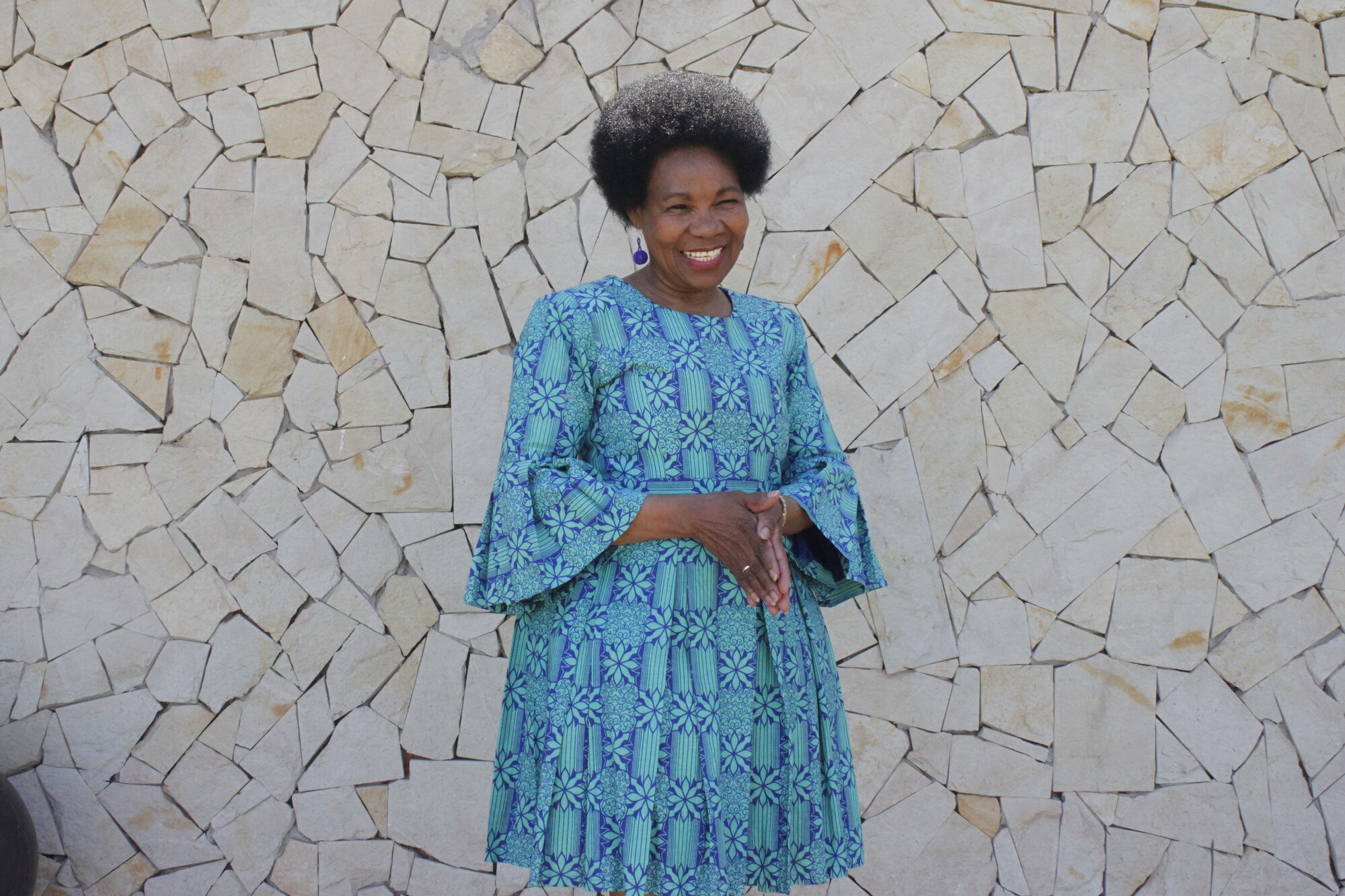Commemorating Justice Yvonne Mokgoro
Date posted: 12 June 2024

Justice Mokgoro at her home in Kimberley, Northern Cape on 2 October 2021 during a CCAC interview.
Justice Yvonne Mokgoro died on 9 May 2024, at the age of 73, after suffering major injuries in a car accident last year.
Justice Mokgoro was the first Black woman to serve as a judge at the Constitutional Court of South Africa. She was on the bench for 15 years from 1994 to 2009.
It was under the spirited guidance of Justice Mokgoro, working with Justice Albie Sachs, that the Constitutional Court Art Collection (CCAC) was formed. Justices Mokgoro and Sachs were appointed to the “decor” committee in 1994. Serving on this committee, they acquired the first artwork that would become a part of the CCAC and saw to the CCAC's continued growth.
Justice Sachs remembers that time with fondness: "It was a match made, not in heaven, but in a converted office with borrowed chairs where the Justices of the Constitutional Court were meeting for the first time. That’s where Yvonne Mokgoro and I were asked by Arthur Chaskalson to be responsible for the décor of the Court’s temporary accommodation, and given R10,000. With that princely sum and the support of our colleagues, the architects and the arts community, we were able to create and build the Court’s now world-renowned art collection. Justice Mokgoro was a wonderful teamworker with a great sense of style and a profound feeling for the organic link between art and justice."
Justice Mokgoro was also keenly involved in the architectural design process that gave rise to the Constitutional Court building that opened in 2004. Justice Mokgoro remained a keen supporter of the CCAC up until her death.
Justice Mokgoro is particularly remembered for her legal philosophy on ubuntu. In a CCAC interview conducted with her on 2 October 2021, asked about how ubuntu looks like and how she sees it reflected through the arts, she responded poetically:
"Ubuntu is so good. Ubuntu is smooth; it's woven. There's a glue used somewhere to connect the state together and there's something that's so strong about it; it's reinforced, you know, and it carries— The strong one carries the weaker one, and it glues people together. And it's done in such a way that it lasts. It is colourful because it makes you happy. It makes you happy that somebody cares, it lessens your worries [of what] you cannot do. Other people will come in and strengthen you. So it's strong, it's powerful, it makes you happy. It's woven. It's grouped together; it brings people together. It's soft because it's caring and it gets people together, to struggle together for the common good. It is something dignified because if people stand with you by providing what you can't, they do it in such a way that you don't feel that you've been given handouts. You're invited in to share because it gives in a sharing way. It doesn't give down, [it's at the] same level: dignity, human dignity, because dignity is central to ubuntu. It is also big and full because it makes you feel satisfied that other people care, and you also feel satisfied that you have come in to provide where there was nothing, because you have contributed to a stronger life of the most vulnerable, you have [uplifted]— It's also like a ladder where you go up the ladder, but you build a strong ladder that you can pull somebody up. You can walk up but you can also pull somebody up with you. It's a broad ladder because [some are] vulnerable, [you can bring] this person up next to you, you can walk together up the ladder. It's dark at the bottom but as you go up the level of practice, it's going up to the sun. Hopeless people get to it, it is the caring part of society. It is the respectful part of society where even if you do things for other people, you do it in such a way that you continue to reinforce their dignity and you don't make them feel vulnerable and second class. Ubuntu is beautiful. It's something that you'll long for when it's not there, it is something that will make you ask where it is when you don't see it and you will look for it. It's bright, it's open, it makes space for others. If you have enough space, and others don't, you're able to bring them in, in a dignified way. It's for people, it's for human beings, it makes us human. It shows our humanity; that's what ubuntu is. A lot of people say [pause] you cannot define ubuntu, but you'll know it when you see it. You know, it was never meant to be a science, to be defined in certain words. It's what you do when it is needed and you know when it is needed the most. You see it from your perspective."
Read more about Justice Mokgoro:
https://www.concourt.org.za/in...
https://www.up.ac.za/news/post...